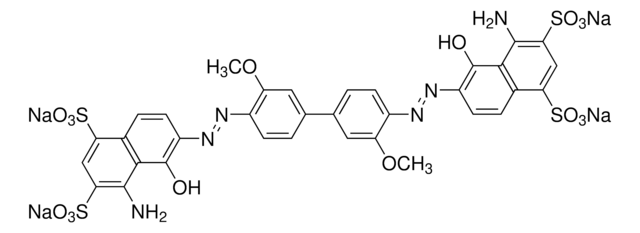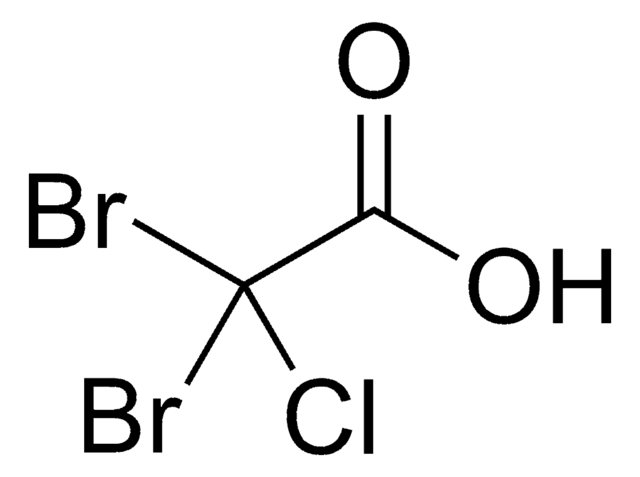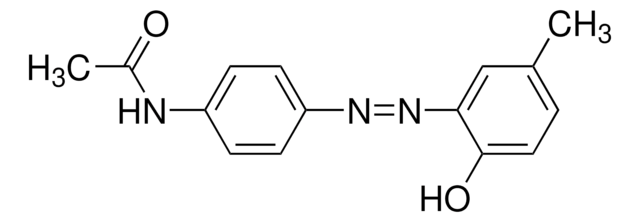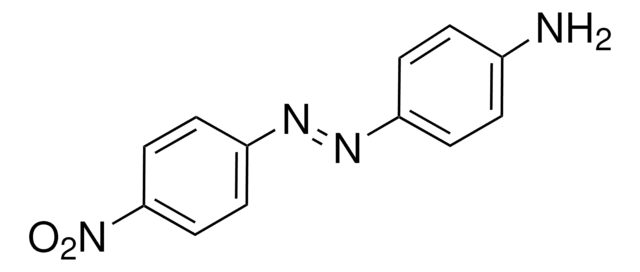所有图片(1)
About This Item
经验公式(希尔记法):
C26H16N4Na2O6
CAS号:
分子量:
526.41
MDL编号:
UNSPSC代码:
12352116
PubChem化学物质编号:
NACRES:
NA.77
推荐产品
质量水平
方案
≥95% (HPLC)
表单
solid
颜色
orange
溶解性
DMSO: ~4 mg/mL
储存温度
−20°C
SMILES字符串
[Na+].[Na+].Oc1ccc(cc1C([O-])=O)N=Nc2ccc(cc2)-c3ccc(cc3)N=Nc4ccc(O)c(c4)C([O-])=O
InChI
1S/C26H18N4O6.2Na/c31-23-11-9-19(13-21(23)25(33)34)29-27-17-5-1-15(2-6-17)16-3-7-18(8-4-16)28-30-20-10-12-24(32)22(14-20)26(35)36;;/h1-14,31-32H,(H,33,34)(H,35,36);;/q;2*+1/p-2
InChI key
AZOPGDOIOXKJRA-UHFFFAOYSA-L
一般描述
柯胺G是一种刚果红羧酸衍生物。
生化/生理作用
β-淀粉样蛋白聚集体的新探针。
柯胺G可以穿过血脑屏障。它可用于阿尔茨海默病′(AD)病理学研究中的脑淀粉样蛋白β (Aβ)沉积的定量测定。
储存分类代码
11 - Combustible Solids
WGK
WGK 3
闪点(°F)
Not applicable
闪点(°C)
Not applicable
个人防护装备
Eyeshields, Gloves, type N95 (US)
历史批次信息供参考:
分析证书(COA)
Lot/Batch Number
V Heiser et al.
Proceedings of the National Academy of Sciences of the United States of America, 97(12), 6739-6744 (2000-06-01)
The accumulation of insoluble protein aggregates in intra and perinuclear inclusions is a hallmark of Huntington's disease (HD) and related glutamine-repeat disorders. A central question is whether protein aggregation plays a direct role in the pathogenesis of these neurodegenerative diseases.
Kazuhiro Ishii et al.
Neuroscience letters, 333(1), 5-8 (2002-10-29)
The neurotoxicity of amyloid beta (Abeta) is widely believed to play a seminal role in neurodegeneration in Alzheimer's disease. We examined the effect of Chrysamine G (CG) on such neurotoxicity using the specific measurement of surviving neurons. CG was found
Virginia M-Y Lee
Neurobiology of aging, 23(6), 1039-1042 (2002-12-10)
Extracellular senile plaques (SPs) are hallmark brain lesions of sporadic Alzheimer's disease (AD) and the likely consequence of genetic mutations that cause familial AD by increasing production of amyloidogenic amyloid-beta (Abeta). Although Abeta vaccines and inhibitors of amyloidogenic secretases are
Eleonora Di Zanni et al.
Neurobiology of disease, 45(1), 508-518 (2011-10-04)
Heterozygous in frame duplications of the PHOX2B gene, leading to polyalanine (polyAla) expansions ranging from +5 to +13 residues of a 20-alanine stretch, have been identified in the vast majority of patients affected with Congenital Central Hypoventilation Syndrome (CCHS), a
W E Klunk et al.
Life sciences, 63(20), 1807-1814 (1998-11-20)
Increasing evidence suggests that deposition of amyloid-beta (A beta) peptide leads to neurodegeneration in Alzheimer's disease. Congo red, a histologic dye that binds to amyloid has previously been shown to diminish the toxic effects of A beta in cell culture.
我们的科学家团队拥有各种研究领域经验,包括生命科学、材料科学、化学合成、色谱、分析及许多其他领域.
联系技术服务部门







